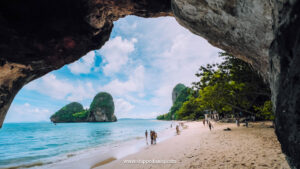There is nothing like exploring a new place with your own transport, feeling unhurried, and having the flexibility to go anywhere at any time. Driving in Thailand allows just that. It affords you the opportunity to create your own schedule, be the boss of your trip, and even travel to areas that would have been otherwise challenging if you were trying to use public transportation.
It also gives you the luxury of booking cheaper and often more peaceful stays away from busy city centers, making your Thailand experience even more tranquil and relaxing – like the paradise it truly is!
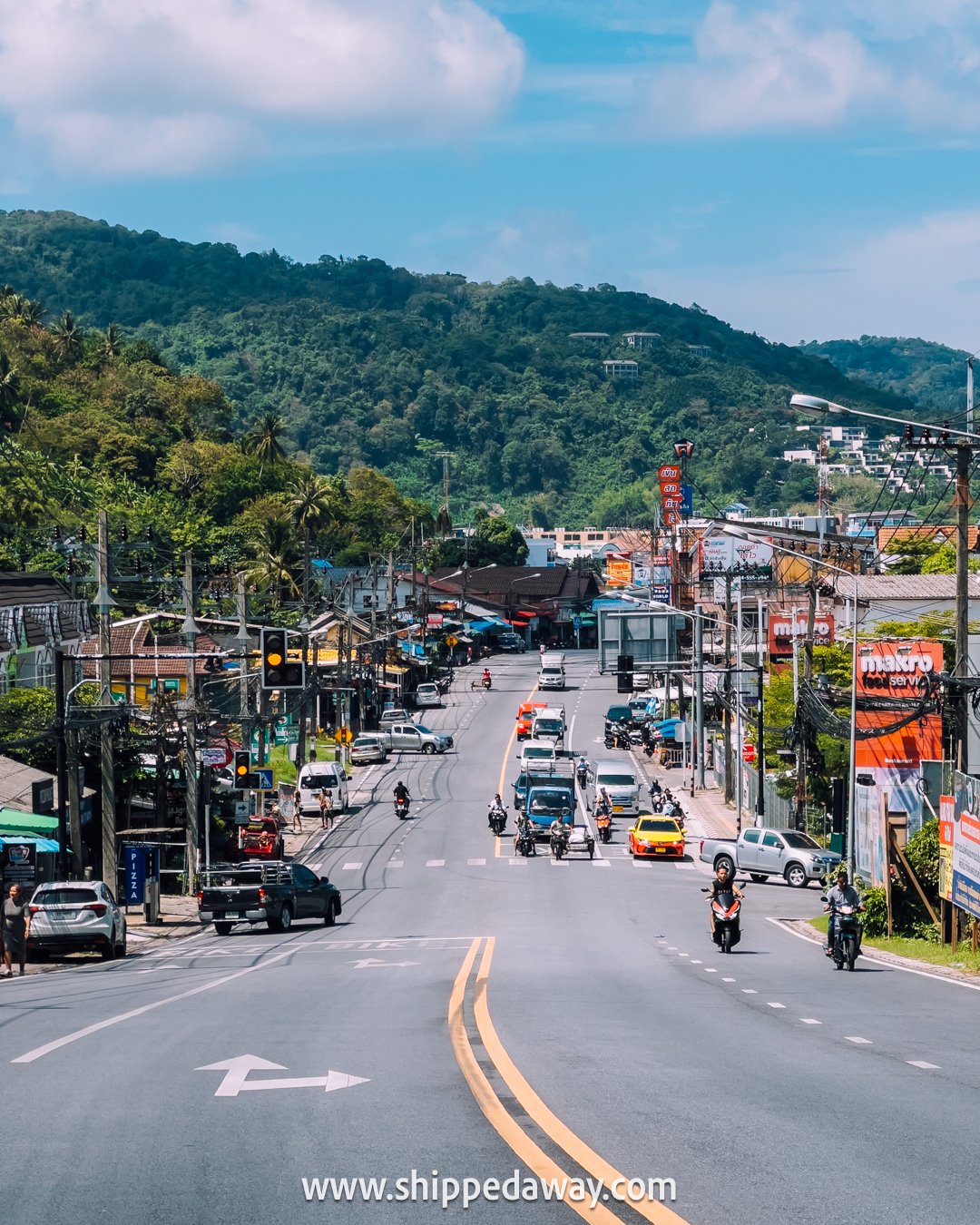
We’ve spent over six months exploring the north, central, and south of the country, so it was just a matter of time during our travels before we had to decide whether to drive a car in Thailand. In the end, it was a no-brainer, and opting to rent a car and self-driving in Thailand was one of the best travel choices we made. Thailand was also the first country in Southeast Asia where we drove a car.
Though it’s not only cars we’ve been driving in Thailand. We’ve covered lots and lots of ground in Thailand by scooter. We drove the Mae Hong Son Loop from Chiang Mai, explored the Golden Triangle from Chiang Rai, traversed the busy streets of Bangkok and the coastal roads of Phuket and Krabi, and crisscrossed the islands of Koh Samui, Koh Phangan, Koh Tao, and many more locations.
- By the way… We published over 48 detailed guides covering all the destinations we visited in Thailand! Click here to browse the list.
In this guide to driving in Thailand, we highlight all the important tips from our travels so you can make an educated decision about renting a car (or scooter) and going on a self-drive Thailand adventure or sticking to other modes of transportation.
All you need to know about driving in Thailand
Driving in Thailand is relatively easy and straightforward. Most of the signs have English translations, which makes navigation less of a challenge. However, it’s safe to say that you need to familiarize yourself with a few driving practices and road rules, as some may differ from your home country.
Traveling soon?
Check Thailand visa requirements.
Get your Thailand E-Visa photo online.
(simple and compliant with regulations and sizing)
Below, we outline some of the most important elements of driving in Thailand as a foreigner (or tourist or traveler, whichever you prefer!).
Driving on the left side
While Thailand was never a colony or under British rule, it was heavily influenced by them and it’s where first cars and car rules came from. That’s why driving in Thailand is done on the left side of the road.
This is different from other neighboring Southeast Asian countries like Cambodia, Laos, and Vietnam – which were under the French Indochina. On the other hand, Thailand’s southern neighbor, Malaysia, also drives on the left, much like Indonesia.
If you’re not used to driving on the left, we recommend taking your rental car for a short spin somewhere with less traffic before hitting Thailand’s busy major roads. We did this in Phuket, where we drove for the first time. We initially drove on the less busy western side of the island, where the traffic was quite chill – not counting Patong.
- Read next: What to see and do in Phuket

Roads and Speed Limits
The roads in Thailand are relatively well-maintained, especially those that are often used to reach popular tourist destinations. Speed limits are written in kilometers per hour (km/h), and the posted limits are the maximum you should follow. Depending on the location or the road, the limit would vary anywhere from 80 to 120 km/h.
Inner city and urban roads usually have limits of 60 km/h. Open and rural roads have limits of between 90 to 100 km/h, while highways and expressways have speed limits of 110-120 km/h. Though most signs are written in English, you might want to familiarize yourself with the stop (หยุด – yùt) and slow (ขับช้าๆ, kàp cháa cháa) signs.
We had no issues with Thailand’s roads, as the quality was often the same or better than in our home countries of Croatia and Slovenia. The traffic signs and markings on the roads were also simple to follow.


Need a reliable mobile package to stay online in Thailand?
We recommend affordable eSIM packages from Thailandesim, where you also get a local number for ride-hailing and other services.
Tip: Shipped Away readers get 5% off with the code SHIPPEDAWAY
Also read:
Best Thailand SIM Cards
Aggressive driving
When driving in Thailand, you may notice that the driving etiquette practiced by motorists is quite different from what you’re used to. As a silent rule of sorts, tailgating, cutting people off, and even not slowing down on pedestrian crossings are very common occurrences on the road.
Trucks and larger vehicles are always given some sort of “priority” and not to alarm you, but when you see a car flashing its lights to you, it may mean that they don’t plan on slowing down and yielding to you.
So, when driving in Thailand, be vigilant and keep your full attention on the road.
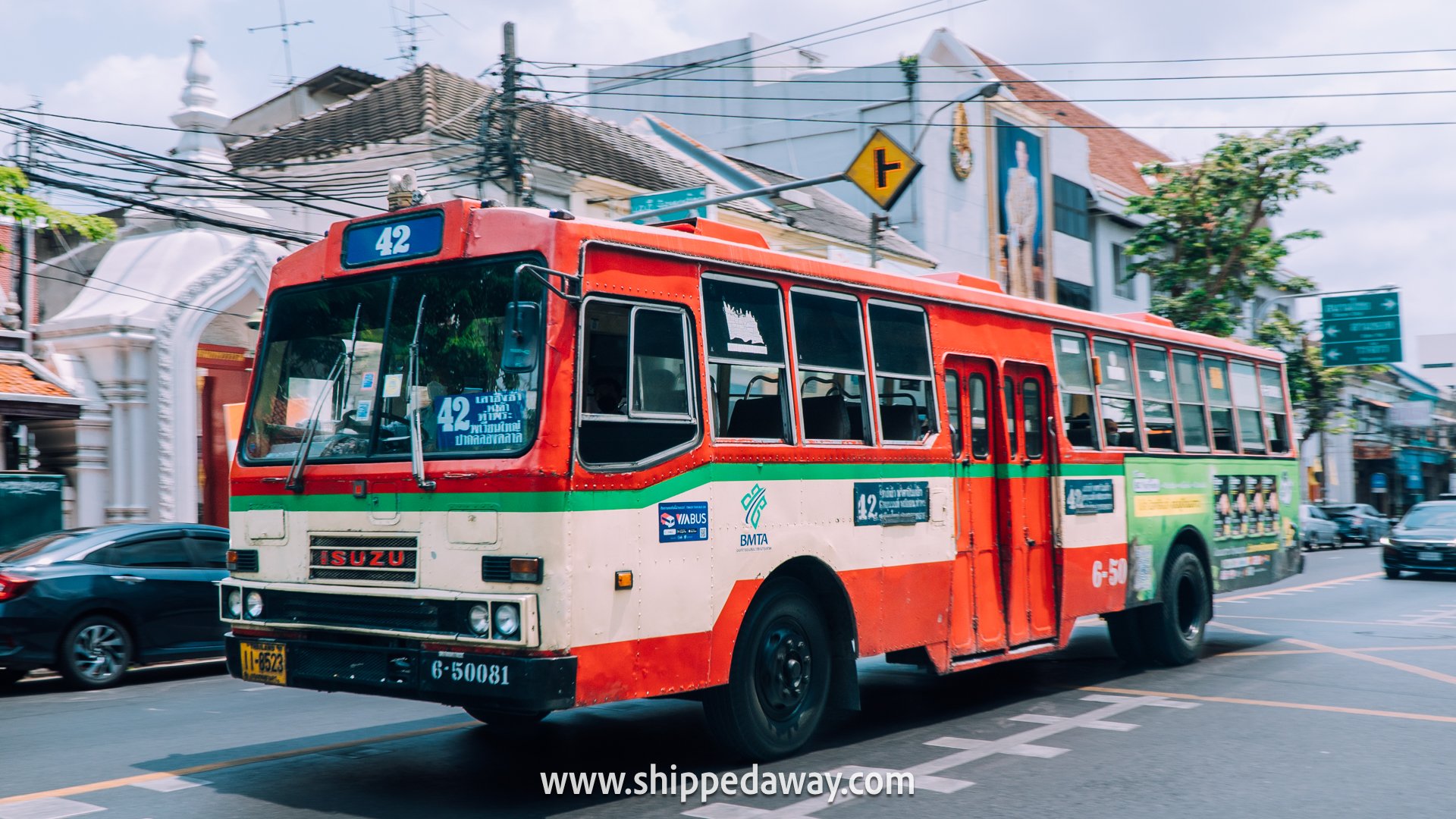
Now that you have read all the “standard info” about aggressive driving in Thailand, we can give you our honest opinion based on our personal experience driving on Thai roads.
Our experience with aggressive drivers
While it’s true that aggressive drivers can be found, in general, we really didn’t experience that in Thailand. Not while in a car and not even on a scooter, which was our main mode of transport. We drove a lot on scooters in the busiest parts of central Bangkok and on faster roads leading out of Bangkok, and we didn’t experience much aggressive driving.
To be honest, we experienced much more in our home countries!
One thing is definitely true: Thai locals drive more effectively. We noticed this pattern of driving also in Vietnam, and we like it much more than elsewhere. Because of the larger percentage of scooters, bikes, tuk-tuks, and other smaller vehicles, drivers react much faster to the situation on the road and are, let’s say, more adaptable.
In comparison, we would feel less comfortable driving a scooter in our home countries since most drivers don’t know how to properly act around motorbikes.

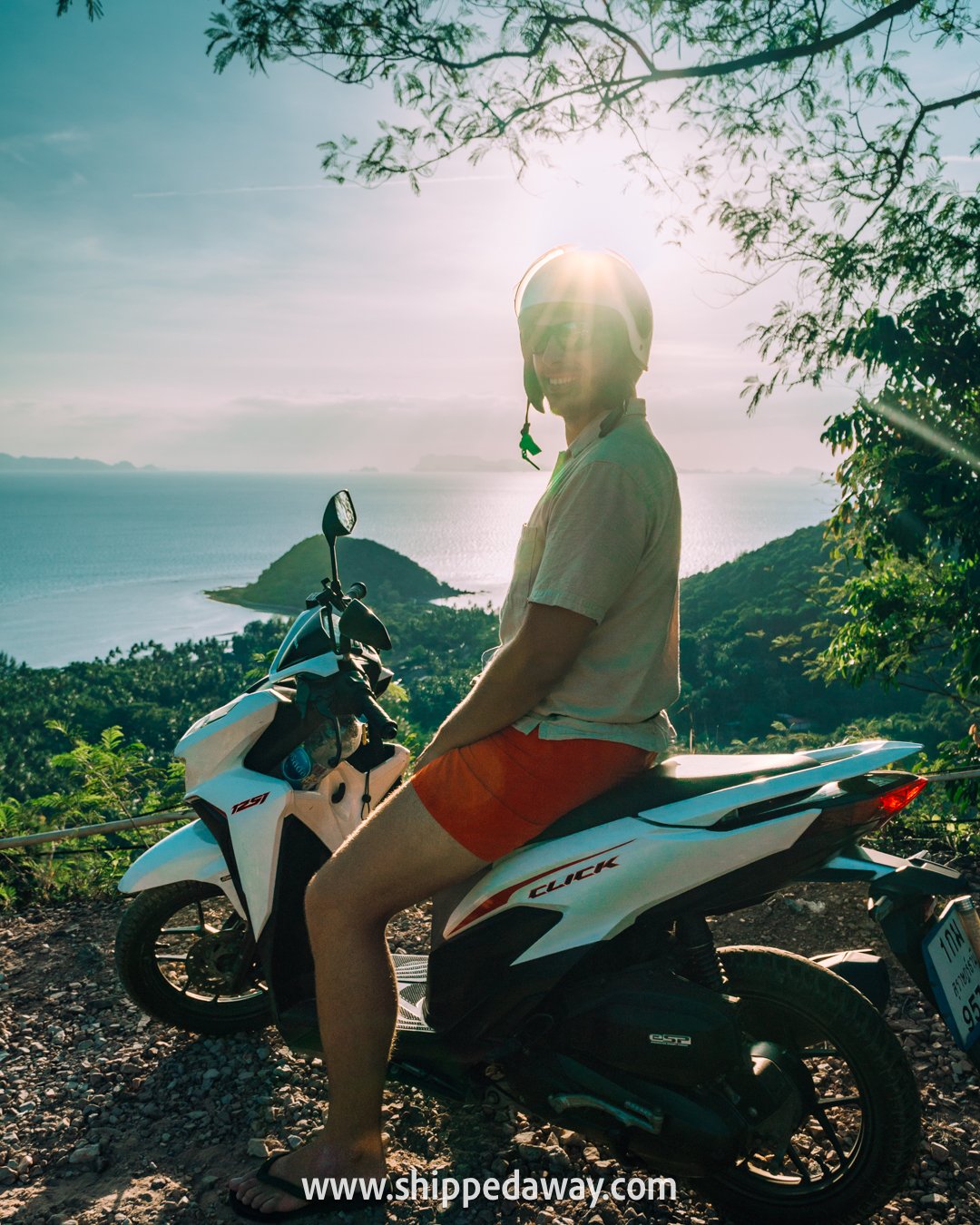
Need reliable Travel Insurance for Thailand?
With 24/7 worldwide assistance, Heymondo insurance includes comprehensive coverage for medical expenses, trip cancellations, and baggage loss or delay.
For digital nomads or full-time travelers, we recommend SafetyWing, which includes brief visits to your home country every 3 months abroad.
Toll Roads in Thailand
Traveling through toll roads and expressways allows you to travel between different cities and parts of the country faster for a minimal fee, since Thailand has relatively inexpensive tolls, costing on average around 25 to 50 Thai baht (about 1 USD). Not only that, there also isn’t a large number of toll roads in Thailand, as most are around Bangkok and on roads leading out.
Unless your car rental agency provides you with an easy pass for the tolls, avoid the blue toll and stick with the regular ones. You can pay for your toll with cash or a card (usually a card).
- Read next: Best Things To Do in Chiang Mai
Gas stations and getting gas
Gas stations in Thailand are fully equipped and full-service, meaning you can easily find restaurants, cafes, gift shops, and convenience stores in the same complex.
What’s even better is that Thai gas stations have attendants who fill your tank for you and even process your payment right at the pump. Most popular and bigger stations accept credit and debit card payments, but just have cash on hand in case you travel to more rural areas.
- Read next: What to see and do in Pai

We’re personally used to filling up cars with gas by ourselves, as it’s the standard practice in our countries, but we didn’t mind having it done for us. The great thing is that you don’t need to get your hands dirty, and you pay right at the pump without needing to walk into the gas station store/building.
Parking
Parking in Thailand, especially in large cities like Bangkok, can be challenging. If you’re planning a full day in the city center, it would be best to find a spot outside the city and commute to your destination by public transportation. However, in places like Phuket, parking isn’t so much of an issue. For example, we even found a great parking lot just minutes away from the Old Town.
- Also read: Where To Stay in Phuket (Best Areas & Hotels)

There are malls, shops, cafes, and even restaurants that offer parking services for a minimal fee, and some would even offer it for free. If, however, you do plan on parking beside a curb, make sure that it’s not painted red and white – these are no park zones. And we don’t recommend parking directly in front of a small business, as those spots are reserved for them.
General parking rules in Thailand
- White rectangles correspond to designated parking spots with signs with time limits and other details posted nearby.
- Yellow and white lines correspond to short-term parking spots that have time limits and are also used as public bus stops.
- Red and white lines mean that it’s a “no park” zone, and parking in these spaces would mean paying a fine or risking your car getting clamped or towed.
- Diagonal white lines are for motorcycles only.
TRAVEL TIP
Always park in large parking garages in big cities like Bangkok. These are often found next to big shopping malls, which are always well-connected by metro and bus to other parts of the city.
Traffic
Traffic in Thailand can be brutal, especially during rush hours from 7:00 to 9:30 AM and 5:00 to 8:00 PM. This is not to say that congestion only happens around these times, but at least this information will give you a rough idea of what the roads would be like.
- Read next: Guide to Damnoen Saduak Floating Market
Many locals suggest using the Highway Traffic app or checking TomTom to access live traffic updates. This would make it easier to plan routes and determine the best way to avoid very crowded areas.
We encountered many standstill situations in Bangkok’s traffic, and it can be a real pain. Chiang Mai is also notorious for heavy traffic and jams due to less road space and countless bikes, but it’s nowhere near Bangkok’s situation, of course.

Island hopping in Thailand with a car
One of the best things to do in Thailand is island-hopping. But can you take a car ferry to Thailand’s islands? With several islands and hundreds of beautiful sandy beaches to explore, having your own vehicle can absolutely be a great advantage, especially for families and smaller groups.
However, there are only a few islands in Thailand where you can go with your rental car, and those include Koh Chang, Koh Samui, Koh Phangan, Koh Lanta, and Koh Yao Yai. These are the only of the popular islands that have regular car ferries coming to and from them.
- Read next: Guide to Koh Samui and Guide to Koh Phangan

There are several ways to purchase car ferry tickets in Thailand. You can book online in advance, purchase from in-country operators, or buy directly upon your arrival at the pier. The car ferry to Koh Samui you can book in advance, but the car ferry to Koh Chang and other islands like Koh Yao Yai and Koh Lanta you can’t book online.
- Read next: Best Time To Visit Thailand
For smaller islands that can’t be reached by car, there are sometimes dedicated parking lots where you can park your car while you travel to the islands by speedboat/ferry. This is, for example, an option for Koh Tao and Trat islands of Koh Mak and Koh Kood, which you can’t get to with a car.
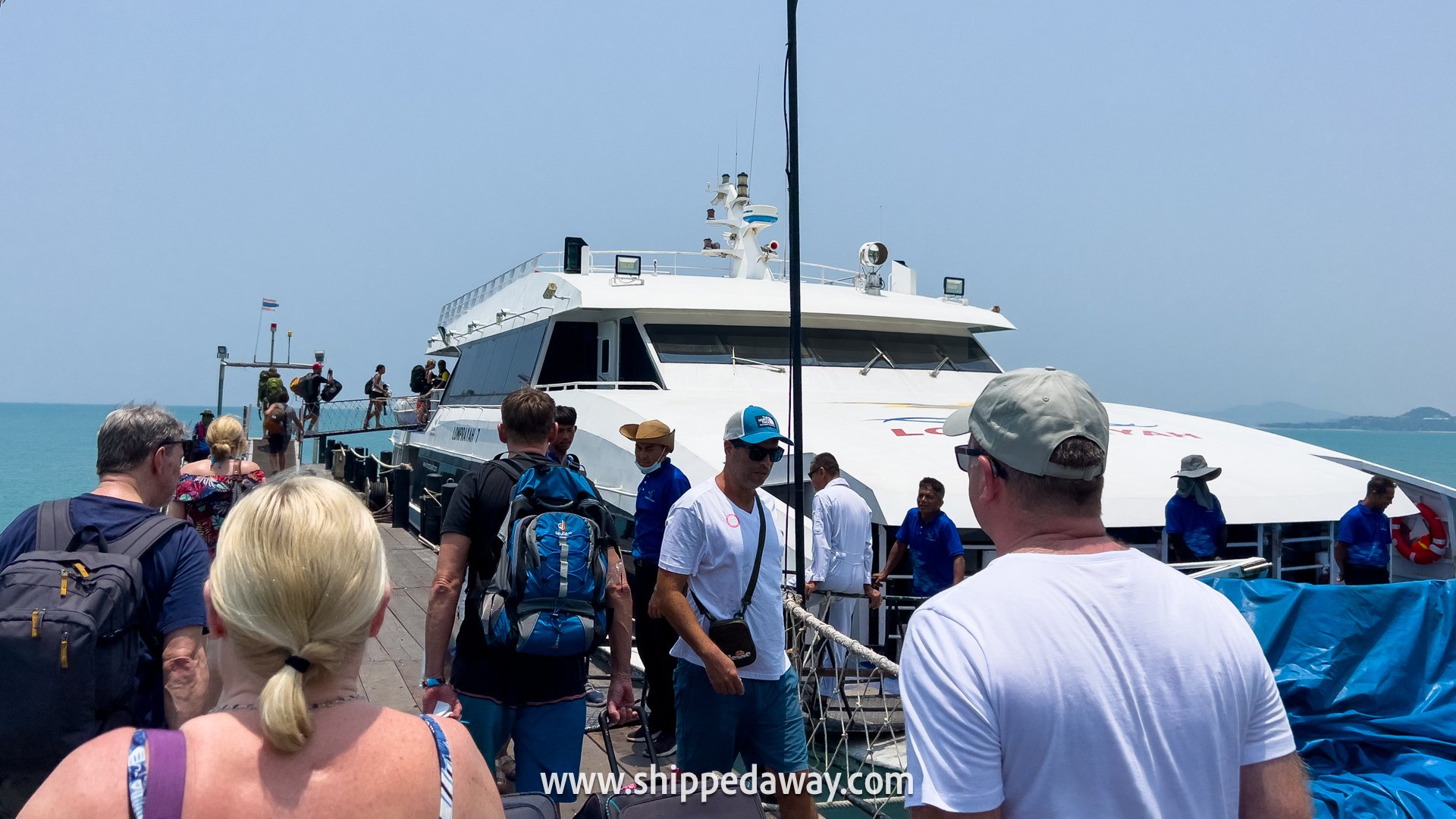

To book transport in Asia, we always use this platform, the top transport booking platform in the region for flights, trains, buses, and taxis. Their user-friendly platform makes booking a breeze.
Cross-country driving
Again, the beauty of renting a car in Thailand is the freedom of time. Since you don’t have to worry about using public transportation or taxis, you can plan to visit as many places as you want and stay for as long as you can.

That’s why going on a cross-country road trip is a great option, considering that most roads in the country are fairly good and there’s lots to see on the way.
Cross-country driving tips for Thailand
Break up your travel into smaller chunks and plan your accommodation in advance.
Thailand is huge! To enjoy your drive, take into account how long it would take you to travel from one area to another. For example, Bangkok to Phuket is a 12-hour drive.
Avoid driving throughout the night. Some areas, especially in the countryside, are poorly lit, and many local motorists drive on the road with non-functioning headlamps/lights, which could be a recipe for disaster.
Take note of the opening and closing hours of gas stations, as those not on the main highway roads (which are 24/7) close at 10 PM.

Honking
Compared to Vietnam, which is big on honking (beeping) by cars, buses, and countless scooters, Thailand is much more relaxed. You will hear a friendly beep or two, but it’s mostly for other drivers to take notice of something, like a light turning green.
- Read next: Guide to Maeklong Railway Market
Where to rent a car in Thailand?
There are countless car rental shops throughout Thailand, as it’s quite common to rent cars in this country, both for locals and foreigners.
You can rent a vehicle upon arrival at the airport or when you reach a particular city or town. Rental prices may vary depending on the agency and the location.
However, as a tip, we suggest booking your car in advance online to ensure the availability of the specific vehicle you want and the add-ons you might be interested in. Booking in advance also saves you the trouble and hassle of “fighting” over vehicles, especially when you’re visiting during peak season. Plus, there might be special promos you can avail of when booking ahead.
Rental cars in Thailand come both in manual and automatic versions, so you can choose what you prefer. But it’s likely that you will get an automatic, as most standard cars in rental places in Thailand are automatic.

Where to rent a motorbike in Thailand
Motorbike rentals are incredibly easy to find in any city and town in Thailand. Most are well-established businesses with plenty of options depending on your skill level and needs.
We mostly drove regular scooters (125cc) in Thailand, which served us well for every trip, including the Mae Hong Son Loop, the Golden Triangle, and similar longer trips.
GUIDED MOTORBIKE TOURS
Thailand is a great country for road trips, and if you’re looking for an organized experience, there are also some pretty cool motorcycle tours that you can join.
| 12 Days Northern Thailand | Learn more |
| 6 Days Mae Hong Son Loop | Learn more |
| 5 Days River Kwai, Ayutthaya, Kanchanaburi | Learn more |
Tips for renting a car in Thailand
When renting a car in Thailand, there are a few documents and requirements you would have to fulfill. Don’t worry, the requirements aren’t that different from other countries, and there aren’t really strange things you need to take note of.
IMPORTANT: Always take photos and videos of any existing damage to the rental car on pickup. This way, you’ll be protected in case you’re accused of damaging the car.
Driver’s License and International Driver’s License
First things first, other than a passport, a driver’s license from your home country is a must, as well as an International Driving Permit (IDP) to be able to legally drive a car in Thailand.
Your driver’s license should also be valid for at least a year.
Credit card
Most car rental agencies require you to use a credit card in the name of whoever is driving the vehicle. Make sure to check this detail ahead of time to avoid problems. We made the mistake of booking a car rental with a debit card in Istanbul just before our big Turkey road trip, and the company didn’t want to give us the car. So last minute, we had to find another one (costing more of course).
However, in our experience, you can find car rental shops in Thailand that offer a cash deposit instead of a credit card. Those rentals might cost a bit more than the ones that require a credit card deposit, but if you haven’t got a credit card, it’s still a good deal. For example, you could get a car with a credit card for 220 USD for 2 weeks (rental only, no insurance), and by paying the deposit in cash, for about 300 USD.
Minimum age
The minimum age to drive in Thailand is 18, but you must be at least 21 to rent a car. Some rental agencies may be more strict about their age requirements, so we recommend confirming that before booking.
Insurance Coverage
It’s always best practice to apply for comprehensive insurance to get the best coverage for you and your vehicle. We recommend this platform for booking your car rental with full insurance in Thailand.
One-way rentals
During your trip to Thailand, you can pick up your rental from one location and drop it off at another.
Keep in mind that rental agencies often require you to pay extra fees. One way rentals cost between 100 to 200 USD in Thailand, depending on the company.
Cross-border rentals
No car rental agency in Thailand allows cross-border rentals. So, as tempting as it is to drive to neighboring countries, make sure to keep your rental well within the borders. In rare cases, some more local car rental agencies might be willing to do it, but it’s going to cost a lot of money.
Did you know? We spent 6 months in Thailand and wrote over 50 Thailand travel guides to help you plan your trip! ❤️ And we keep adding new ones!
Frequently Asked Questions
Yes, absolutely, Thailand is a safe country to drive in as a tourist. The road quality is great, and rentals well-serviced.
Driving in Thailand isn’t hard at all. Rules are easy to follow, as traffic signs have English translations, and there are no unique specifics to the driving.
Yes, foreigners looking to drive in Thailand need a valid International Driving Permit.
There are just a few toll roads in Thailand, mostly around Bangkok, and are quite affordable.
In Thailand, you must drive on the left side of the road.
We highly recommend renting an automatic car for your driving adventure in Thailand. However, there are also stick-shift options if you prefer that.
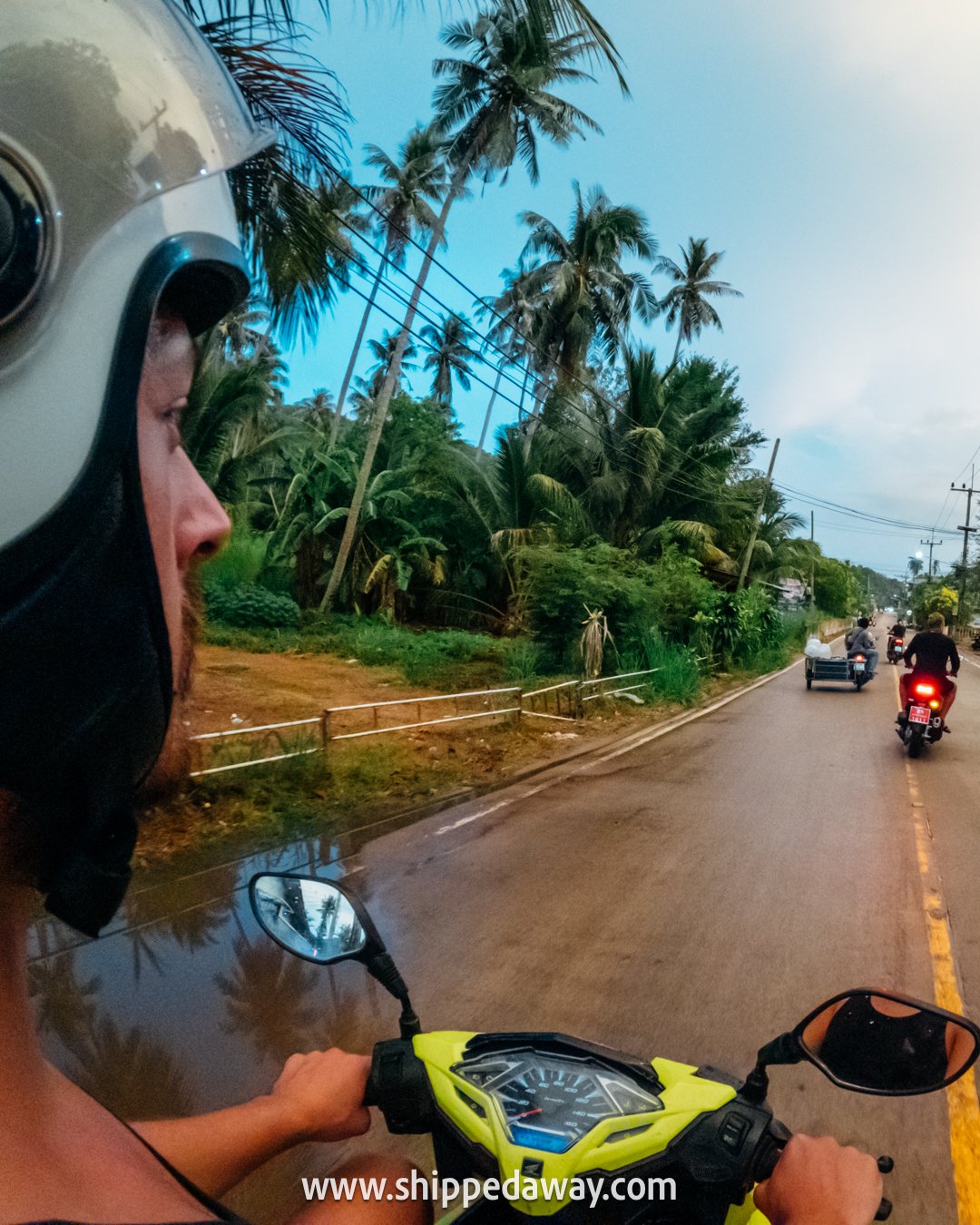

Final thoughts on driving in Thailand
Self-driving in Thailand is a must for visiting some off-the-beaten-path destinations and popular spots in a more relaxed and flexible manner.
We enjoyed driving in Thailand and are already planning our next road trip!
Although we loved all the different transport options we tried in Thailand, including this unique scooter-tuk-tuk in Krabi!

Thank you for reading our Guide on driving in Thailand. We hope we helped you plan your trip. If you have any questions, feel free to leave a comment below.
Continue reading
Find a list of over 50 travel guides to Thailand’s South, Central, and North.
Chiang Mai – Chiang Rai – Pai
Phi Phi Islands – Maya Bay – Koh Hong
Koh Samui – Koh Tao – Koh Phangan
Similan Islands – Surin Islands










